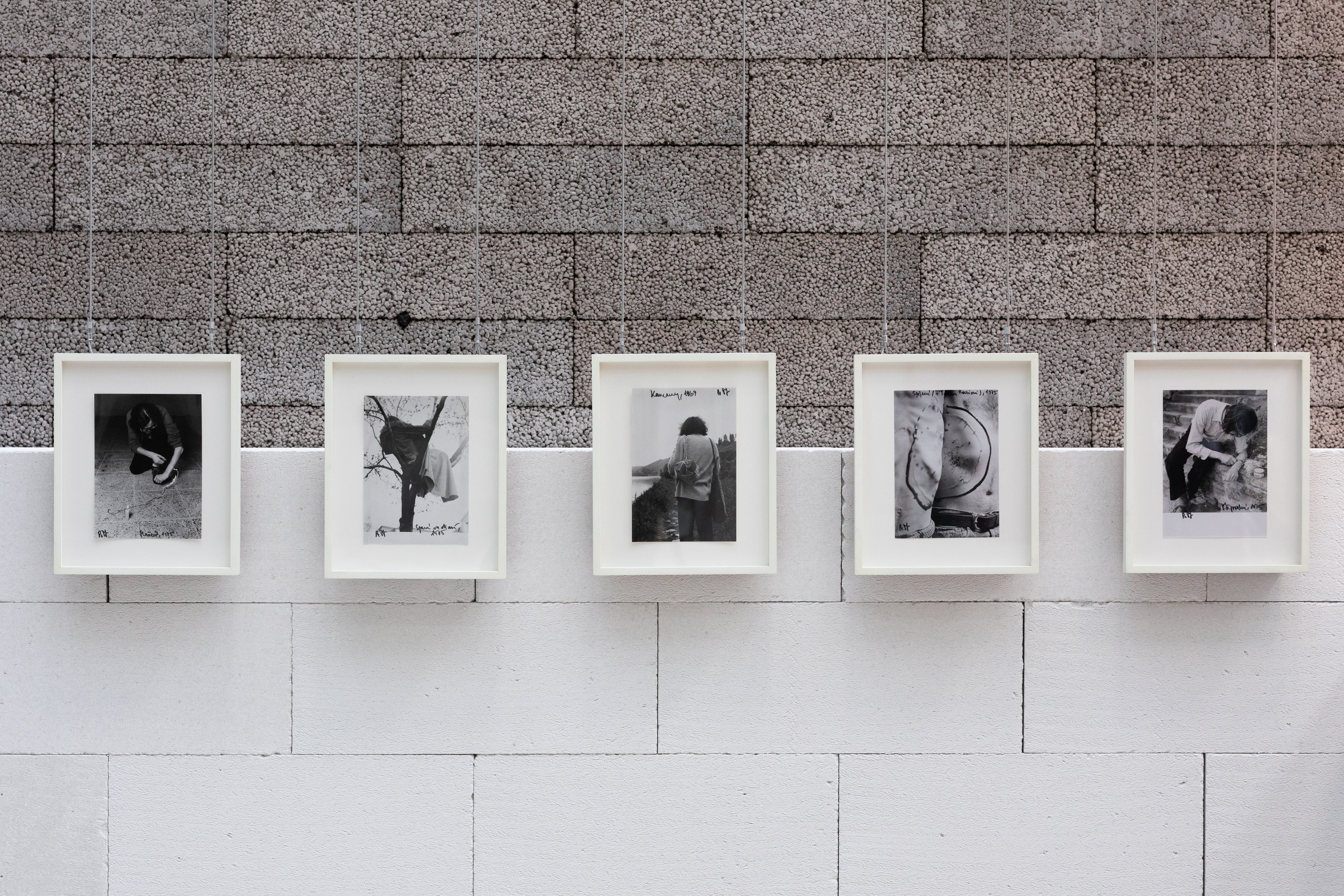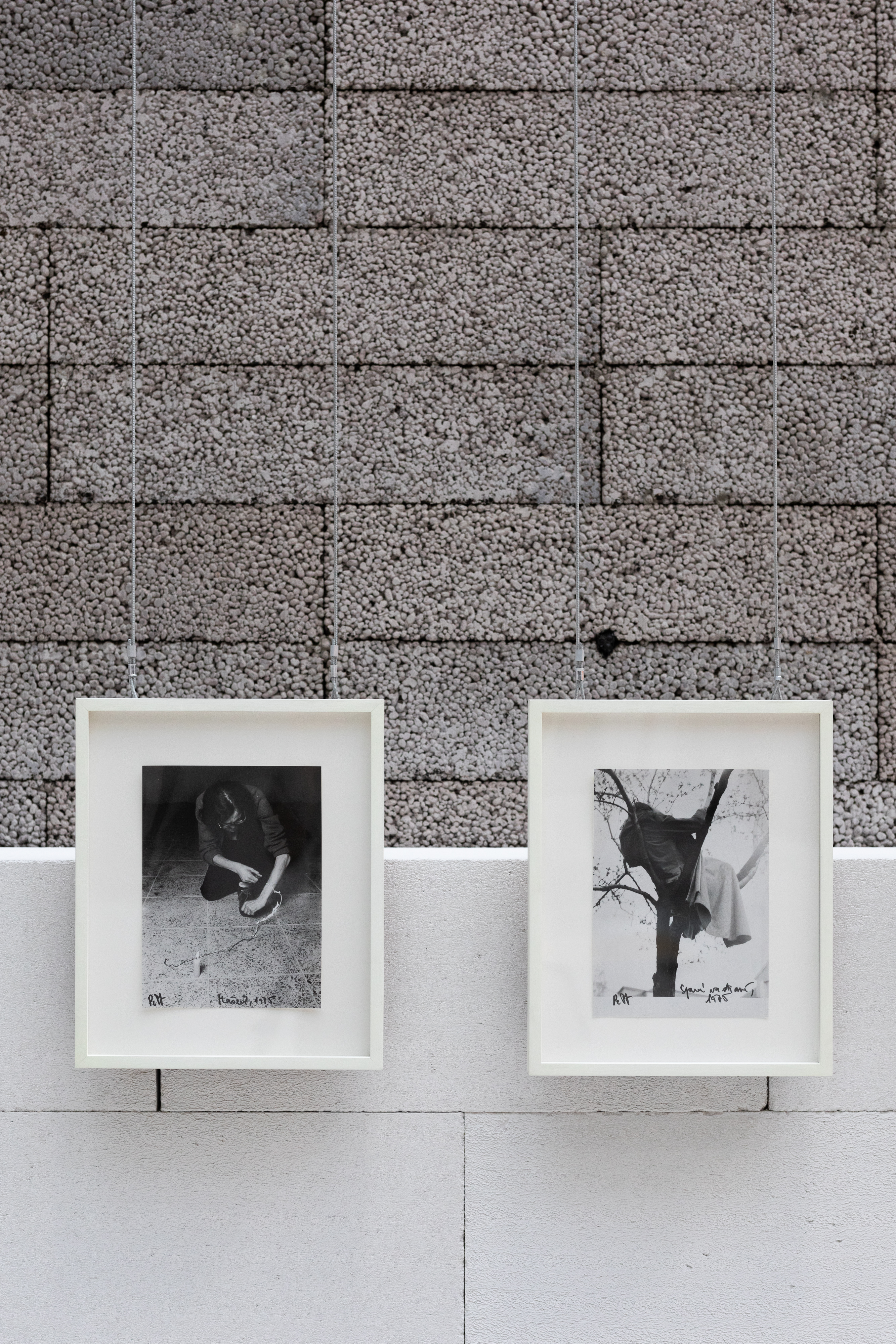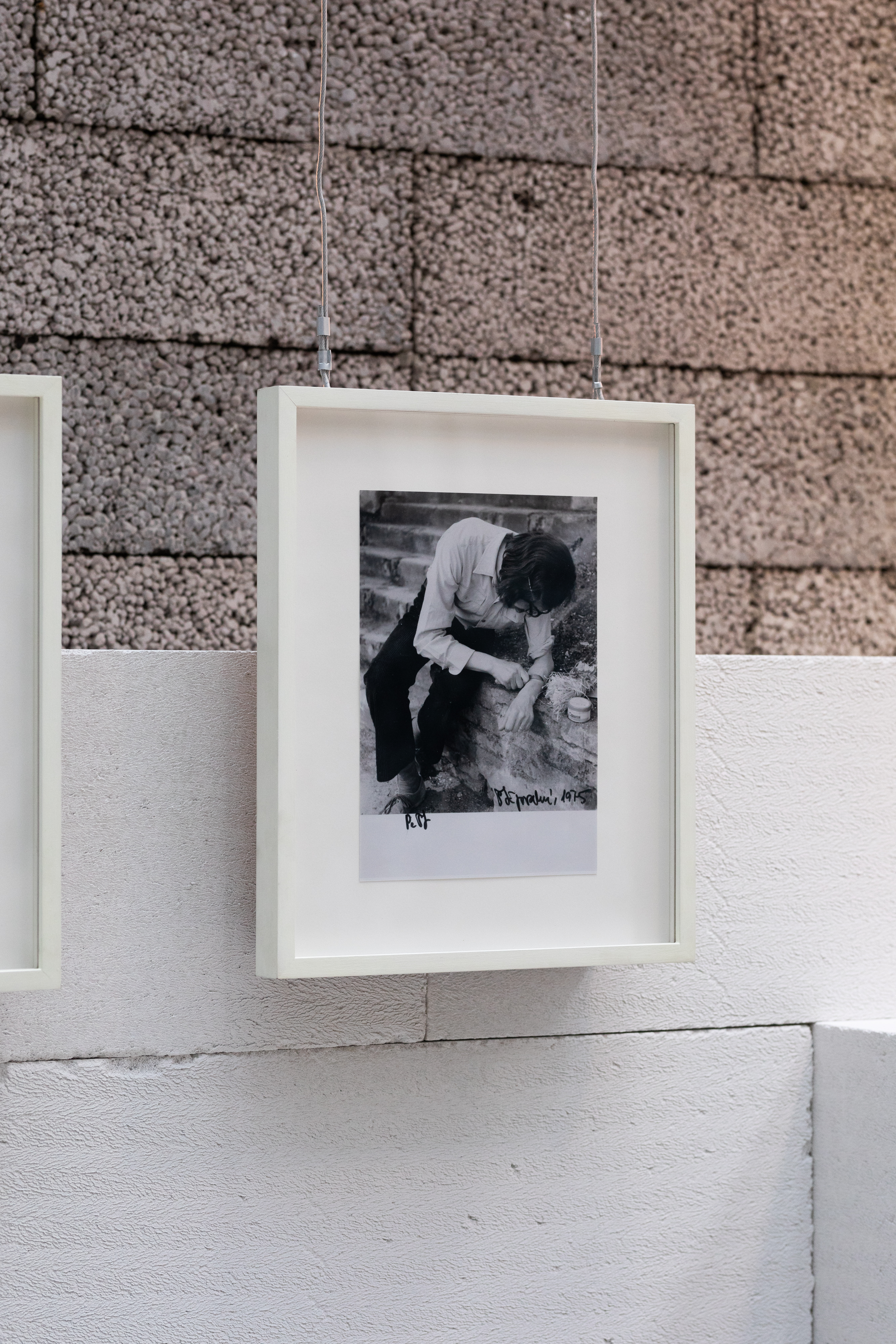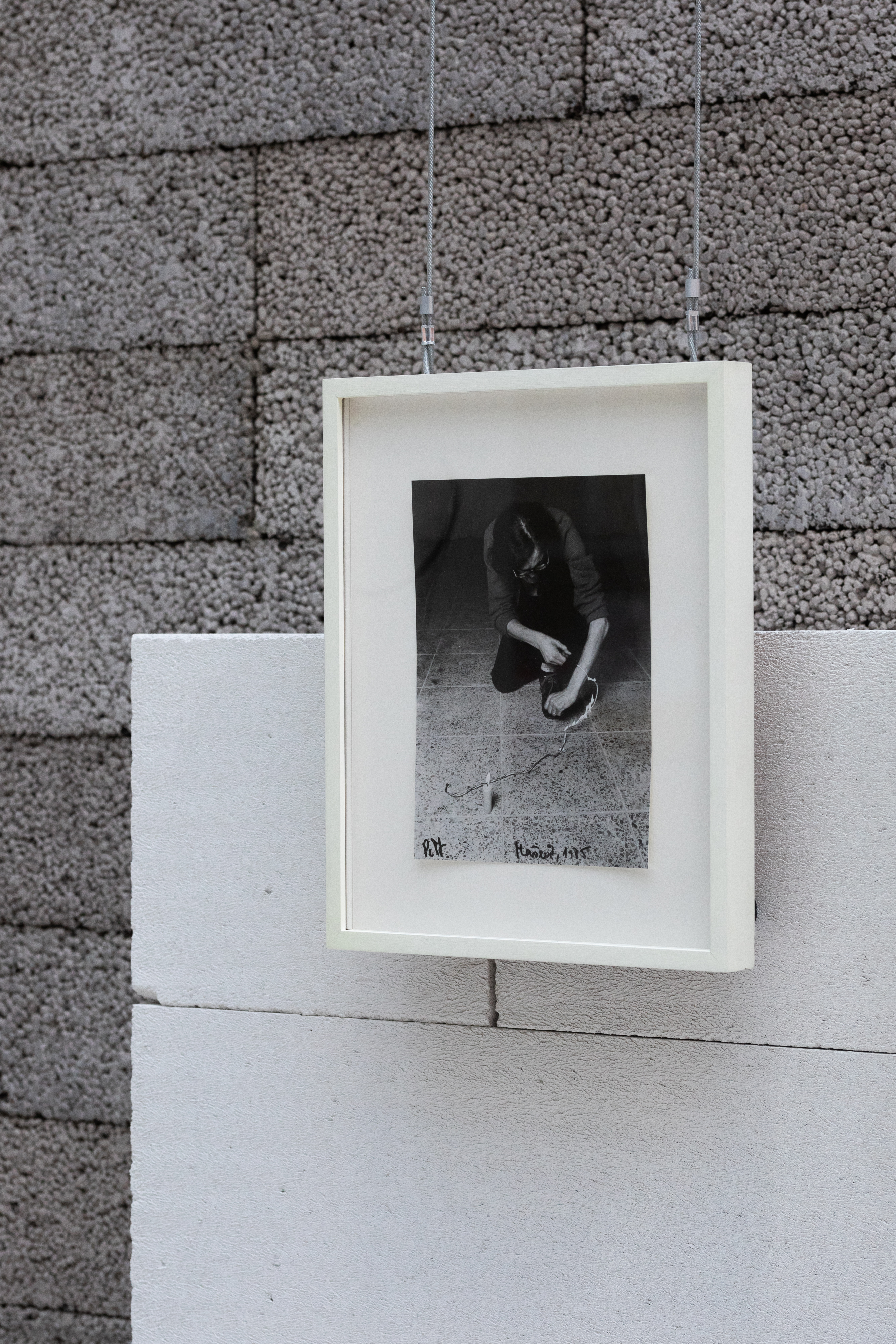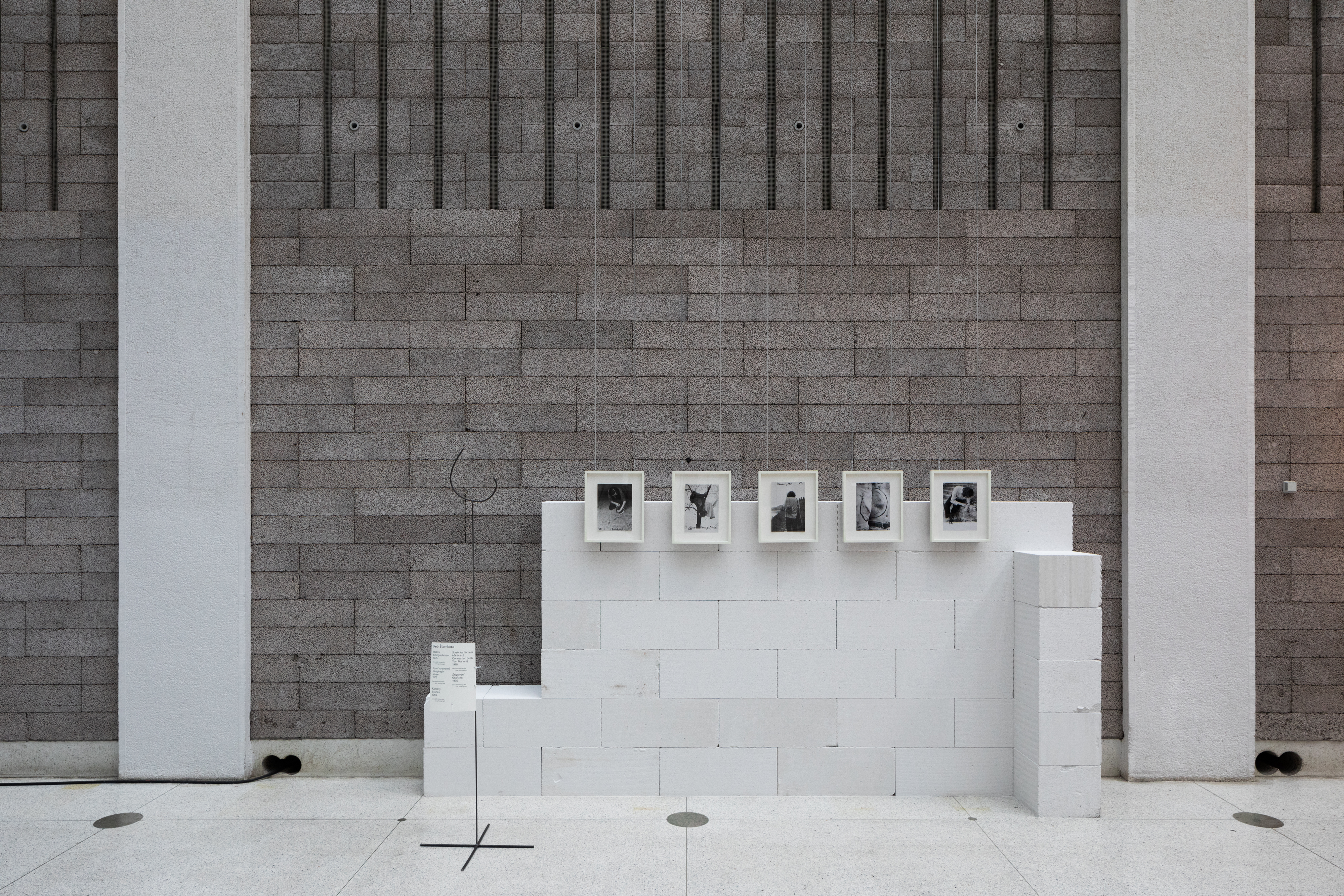Petr Štembera
Work exhibited in the Trade Fair Palace:
Connection (with Tom Marioni) / 1975 / b/w photograph (23.5 × 17.2 cm)
Extinguishment / 1975 / b/w photograph (original size: 23.5 × 17.2 cm, framed: 35.6 × 29.7 cm)
Grafting / 1975 / b/w photograph (23.5 × 17.1 cm)
Sleeping in a Tree / 1975 / b/w photograph (23.4 × 16.8 cm)
Stones / 1969 / b/w photograph (24.9 × 17.1 cm) / courtesy of Kontakt Collection
Biennale Matter of Art 2024, National Gallery Prague, Trade Fair Palace (c) Jonáš Verešpej
Petr Štembera (lives in Prague, b. Pilsen (Czech republic), 1945) is one of the most important Czech action and conceptual artists. In the 1970s, he did performances for small audiences and documented them with photos. He put his body into psychically and mentally demanding situations. The first performances took place in nature. He was showing the boundaries between work and free time, gesture and the collective, body and nature. His works were almost not seen – they only existed in the moment, and later existed through the photos that captured them. He treated his body like an object and tool, testing how much it could endure. His actions involved things like staying awake for a long time, or sleeping in a tree, not eating for many days, and carrying stones. He was extinguishing fire with his own blood and letting ants eat sugar on his own belly. The directions of his actions weren’t always clear at first glance. They didn’t have an obvious meaning or purpose. But through them, he made space for people to think about and reflect on the body, nature, and time. In 1975, he performed an action called Grafting – basically, he grafted a plant into his arm. Obviously, plant liquids messed with his blood, and he ended up in the hospital. According to him, he wanted to “connect with the plant, put it in my body, and be with it as long as possible.” He was testing the ways that nature and the body can coexist, but also poison each other.
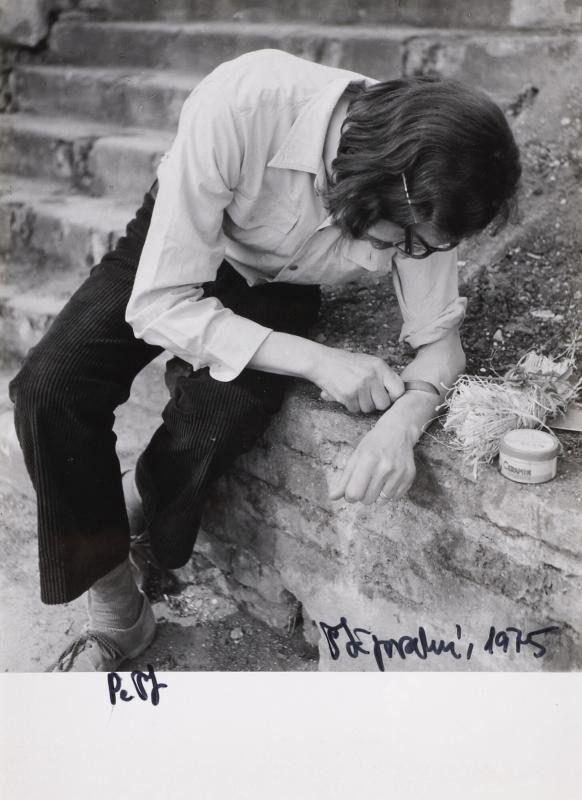
Petr Štembera – Grafting, 1975, source: Kontakt Collection
Petr Štembera was one of the leading personalities of the Prague body art circle and since 1970 has mediated contact with important representatives of action art from behind the Iron Curtain and inside the Soviet bloc.
n 1970 and 1971 Štembera made a number of interventions in the natural environment, be this through delimiting a forest or transforming a bow using artificial elements such as cords and rolls of film. Perhaps Štembera’s most important land art event was Large Puddle (1970), in which he attempted to level off a flooded meadow into the shape of a triangular crotch. Even in these early works Štembera was becoming aware of his body. A huge influence on his body art was a stay in Paris, where he spent ten days without food. Here he learned how enriching it can be for a person to subject themselves to physical and psychological extremes. Yoga, which Štembera practised in the 1970s, also had an undeniable influence on his expanded perception of his own body. At the start of the 70s, his tendency toward asceticism led Štembera to create a number of personal, very demanding pieces, which he performed himself or with the minimum number of assistants. The need for communication led him finally to present his performances to a close circle of viewers, and to the visualisation of the issues which he was concerned with.
Performance was a personal act demonstrating free will in an unfree world. It was a method of liberation as well as an expression of anxiety. Like Karel Miler and Jan Mlčoch, Petr Štembera decided to terminate his activities at the end of the seventies. The reason was both exhaustion, but also the feeling of the ridiculousness of artificially risky events when compared to the very real threat posed to signatories of Charta 77. In Štembera’s case the decision was also influenced by his interest in other psycho-physical activities, for instance oriental martial arts.
Shortened bio of the original by Pavlína Morganová
